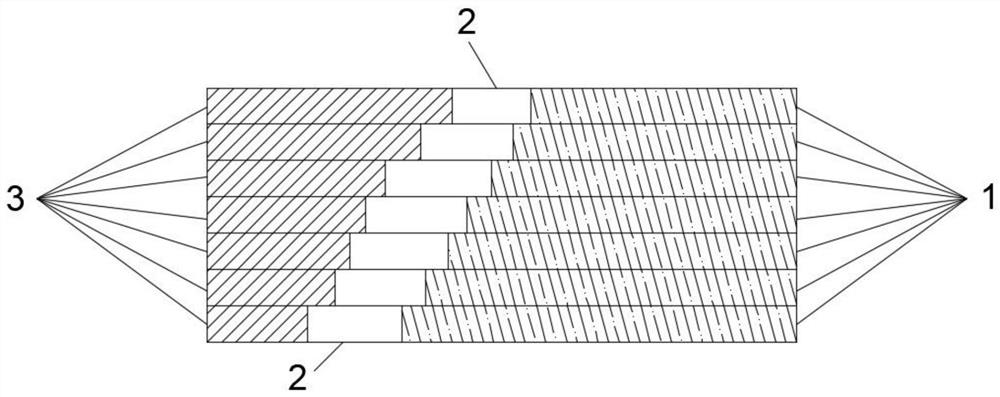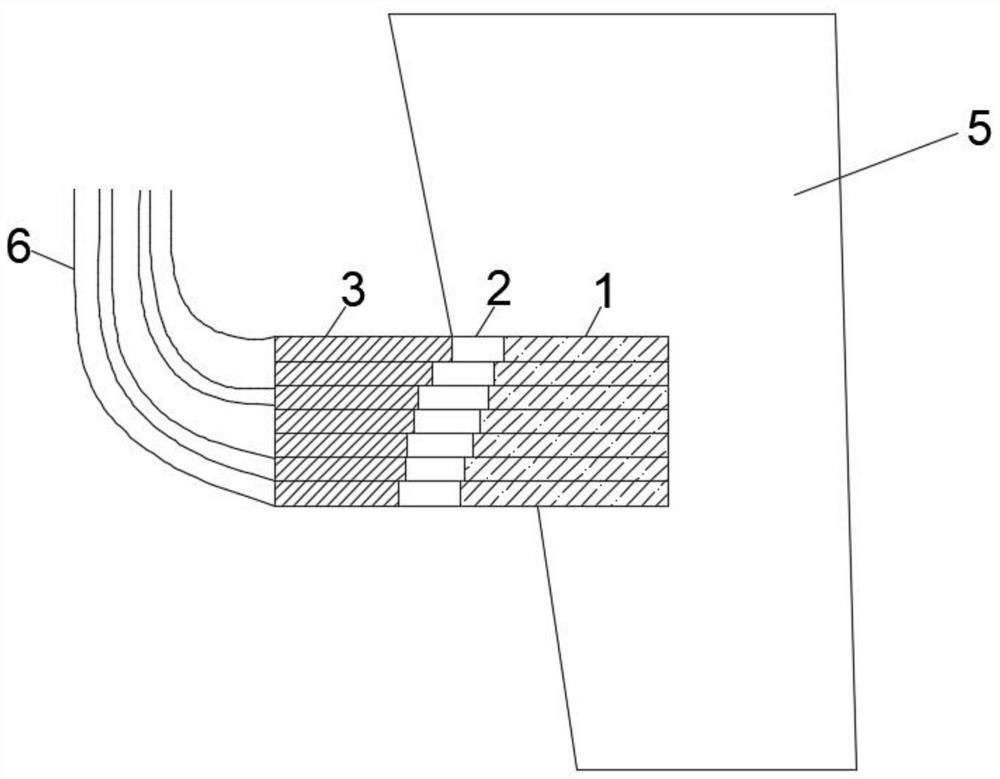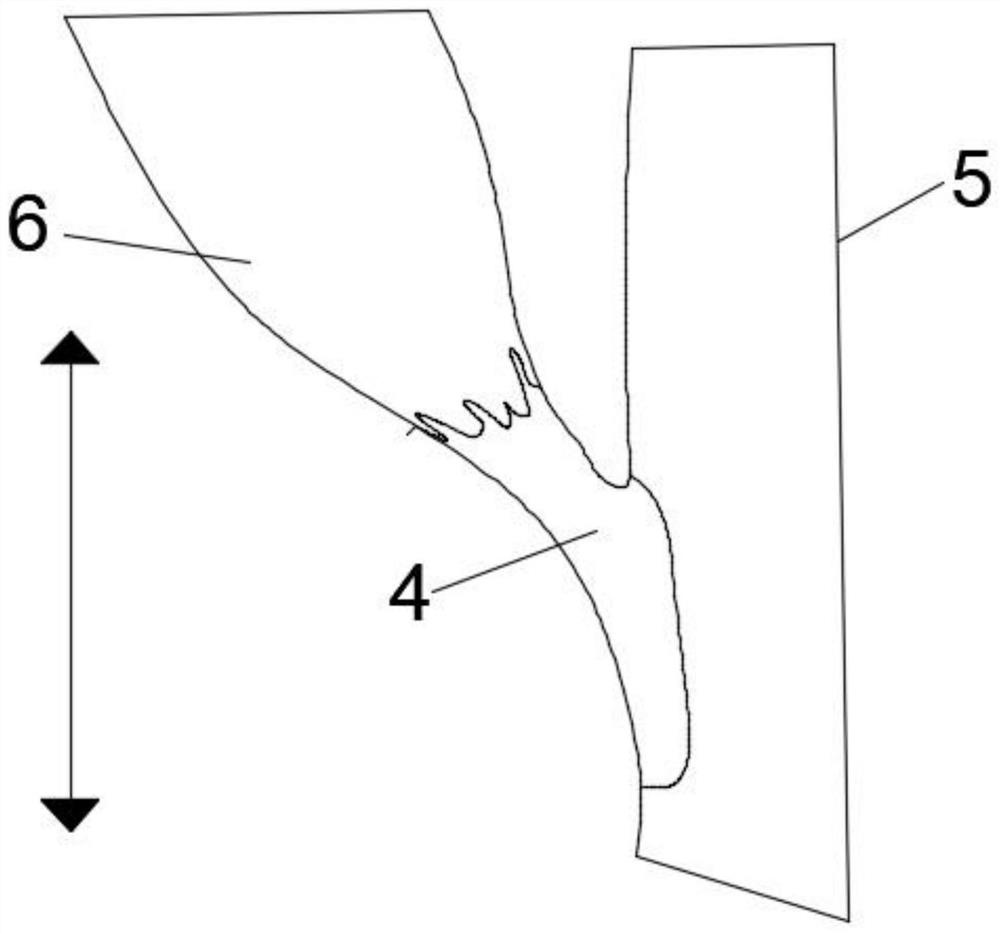A bionic three-phase tissue engineering scaffold
A tissue engineering scaffold and bionic technology, applied in the field of repair of bone and tendon junction defects, can solve the problems of difficult preservation, cumbersome operation process, and lack of consideration.
- Summary
- Abstract
- Description
- Claims
- Application Information
AI Technical Summary
Problems solved by technology
Method used
Image
Examples
Embodiment 1
[0039] A bionic three-phase tissue engineering scaffold, such as figure 1 As shown, it includes a plurality of scaffold layers, and the scaffold layers are stacked longitudinally. The scaffold layers include bone scaffold 1, cartilage scaffold 2 and tendon scaffold 3 distributed in sequence along the transverse direction (from right to left), and the bone scaffold 1 of the adjacent layer At least partially abut against each other, the cartilage scaffolds 2 of adjacent layers are at least partially abutted against each other, and the tendon scaffolds 3 of adjacent layers are at least partially abutted against each other, wherein the bone scaffold 1, cartilage scaffold 2 and tendon scaffold in at least two scaffold layers 3 have different proportions of the area. In the above scheme, by controlling the position and / or proportion of the area occupied by the bone scaffold 1, the cartilage scaffold 2 and the tendon scaffold 3 in each scaffold layer, the engineering scaffold obtaine...
Embodiment 2
[0062] Different from Example 1, in this example, if Figure 8-9 As shown, the bone scaffold, cartilage scaffold and tendon scaffold of each layer (each scaffold layer) are integrally formed, and the cartilage scaffold and tendon scaffold of each layer are longitudinally layered. In one of the embodiments, such as Figure 10-11 As shown, the partial bone scaffold of each layer is longitudinally layered.
[0063] It should be understood that, in the above solution, by layering the cartilage scaffold and the tendon scaffold longitudinally, the bone scaffold is still partly connected to form an integral structure. Make the scaffold layer form a structure similar to "sheets" (that is, the bone scaffold is the handle, and the cartilage and tendon are the unified structure of the sheets), making it better for surgical implantation, and there are gaps in the scaffold to facilitate the entry of cells It grows inside the scaffold, which greatly improves the healing rate. In addition,...
PUM
 Login to View More
Login to View More Abstract
Description
Claims
Application Information
 Login to View More
Login to View More - R&D
- Intellectual Property
- Life Sciences
- Materials
- Tech Scout
- Unparalleled Data Quality
- Higher Quality Content
- 60% Fewer Hallucinations
Browse by: Latest US Patents, China's latest patents, Technical Efficacy Thesaurus, Application Domain, Technology Topic, Popular Technical Reports.
© 2025 PatSnap. All rights reserved.Legal|Privacy policy|Modern Slavery Act Transparency Statement|Sitemap|About US| Contact US: help@patsnap.com



